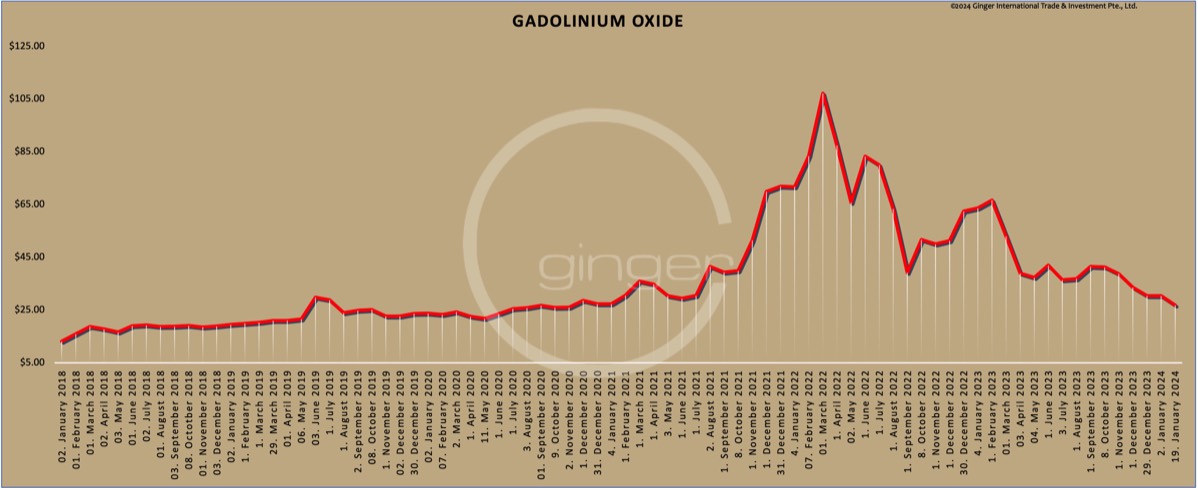Gadolinium Oxide
- About
- Specification
- References
- Price information
- Video
- tab 6
- tab 7
- tab 8
- tab 9
- tab 10
- tab 11
- tab 12
- tab 13
- tab 14
- tab 15
- tab 16
- tab 17
- tab 18
- tab 19
- tab 20
Gadolinium occurs in many minerals, but is most commonly extracted from monazite and bastnasite ores.
Gadolinium oxide is suitable for glass, optic and ceramic applications, semiconductor fabrication, carbon nano-tubes and nuclear reactor shielding. In medicine it is used it is used in EDTA as an injectable contrast agent for patients undergoing magnetic resonance imaging (MRI).
Gadolinium oxide is suitable for glass, optic and ceramic applications, semiconductor fabrication, carbon nano-tubes and nuclear reactor shielding. In medicine it is used it is used in EDTA as an injectable contrast agent for patients undergoing magnetic resonance imaging (MRI).
Appearance: White solid
Purity: Gd2O3/TREO≧99.5%, and
Purity: Gd2O3/TREO≧99.99%, as per China industrial standard GB/T 2526-1996
Test methods: GB/T 14635 and GB/T 18115.9
Purity: Gd2O3/TREO≧99.5%, and
Purity: Gd2O3/TREO≧99.99%, as per China industrial standard GB/T 2526-1996
Test methods: GB/T 14635 and GB/T 18115.9
Chemical formula: Gd2O3
CAS No.: 12064-62-9
EINECS EC No.: 235-060-9
HS-Code: 2846901930
Industrial standard: GB/T 2526-1996
CAS No.: 12064-62-9
EINECS EC No.: 235-060-9
HS-Code: 2846901930
Industrial standard: GB/T 2526-1996

Price level of gadolinium oxide on [prices-B1] was ca. [prices-B13]/kg net Ex Works China, incl. 13% VAT.
This is not an offer, it is a general price information. Please use at your own risk.
If you need a specific offer, please contact us and we will be delighted to serve you.

